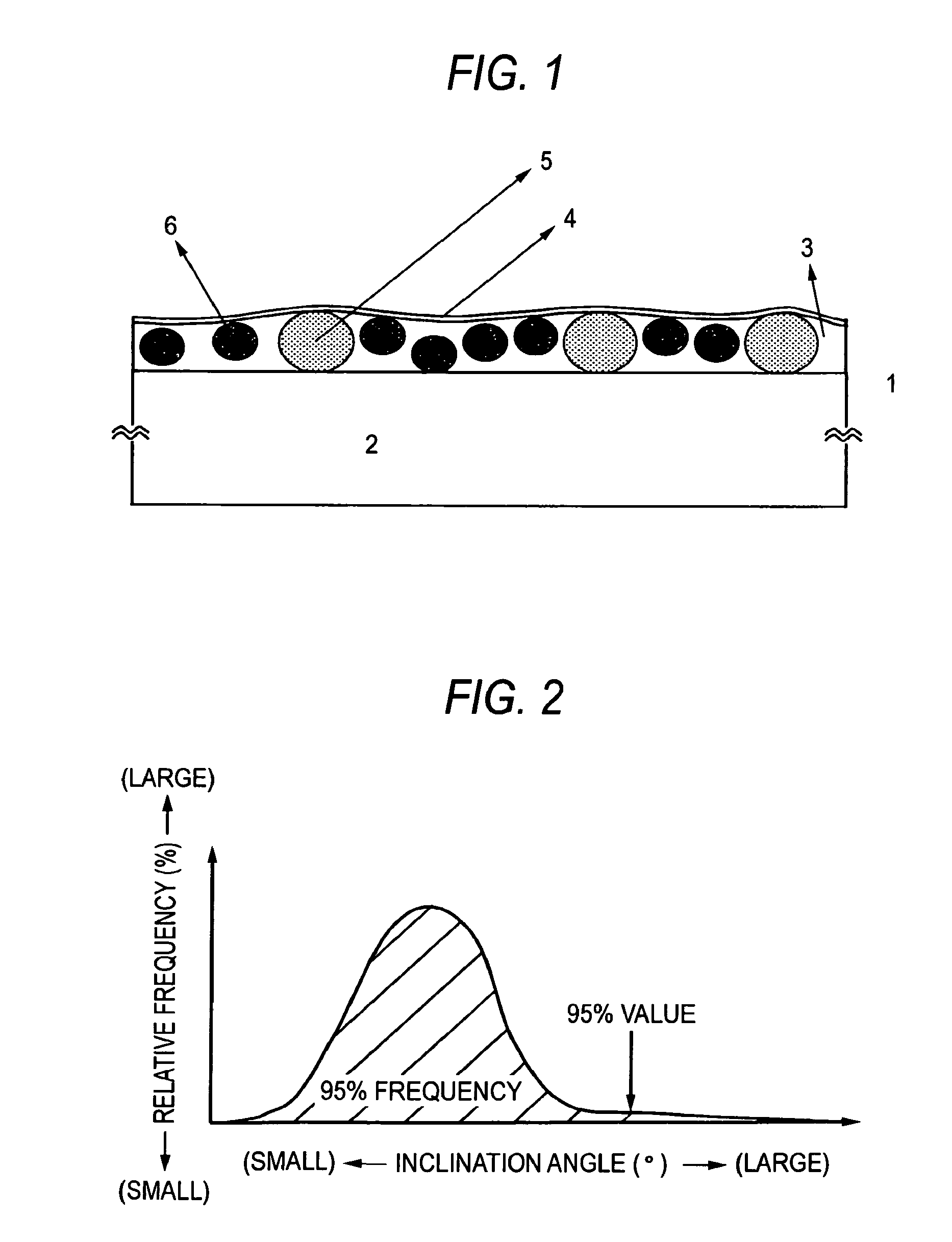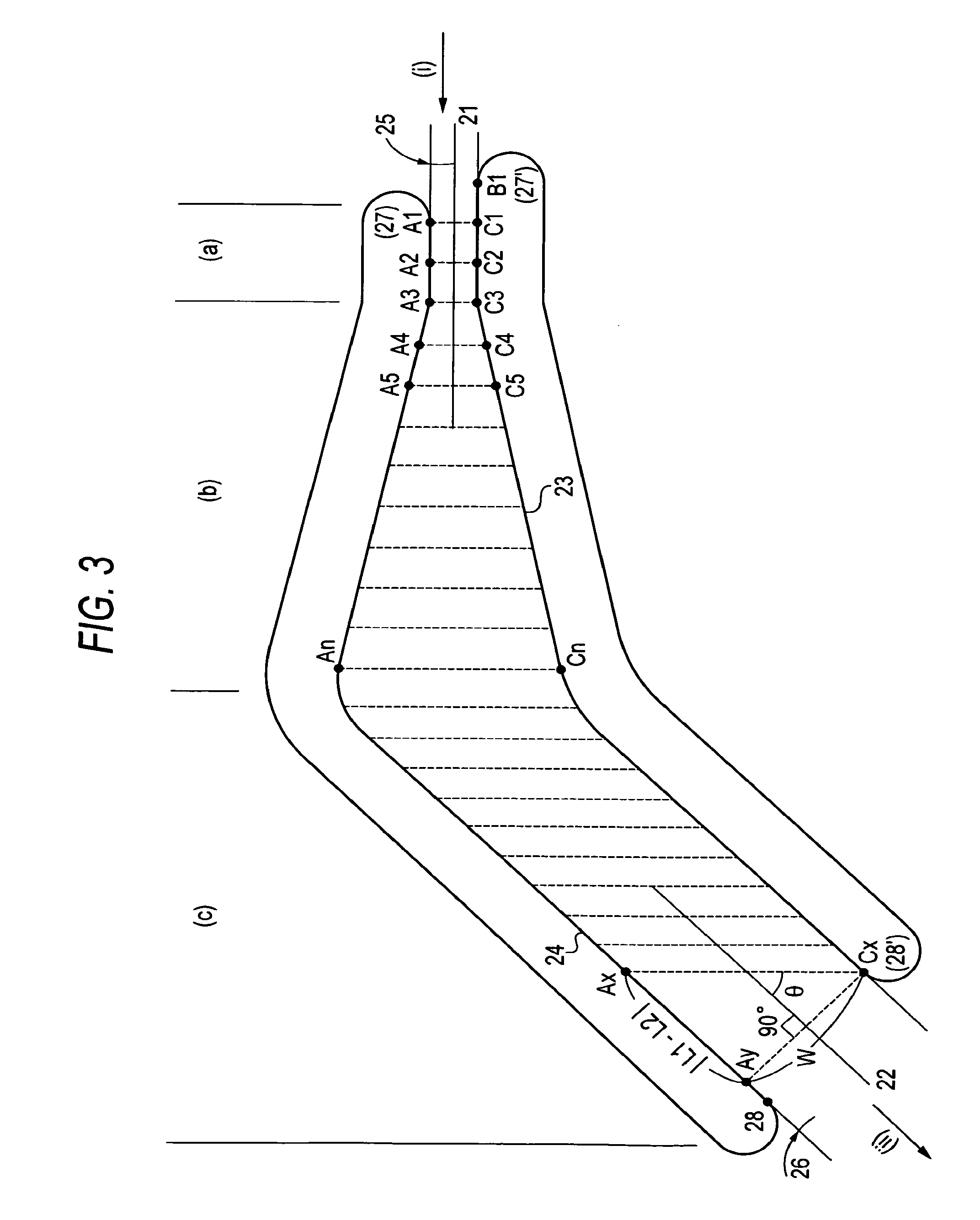Antiglare and antireflection film polarizing plate and display device
a technology of anti-glare and film, applied in the direction of coatings, optics, instruments, etc., can solve the problems of inability to meet this requirement, disadvantageously deteriorating display quality, white blurring or black loosening, etc., and achieve excellent image display qualities, good black, and high anti-reflection performance
- Summary
- Abstract
- Description
- Claims
- Application Information
AI Technical Summary
Benefits of technology
Problems solved by technology
Method used
Image
Examples
example 1
Example Sample 1
(Preparation of Coating Solution (1) for Antiglare Hard Coat Layer)
[0194]61.3 Parts by mass of a commercially available silica (fine particulate silica, average particle size: about 15 nm)-containing UV curable hard coat solution (DESOLITE KZ7317, produced by JSR, solid concentration: about 72%, SiO2 content in solid contents: about 38%, containing a polymerizable monomer DPHA and a polymerization initiator) was diluted with 8.4 parts by mass of methyl isobutyl ketone. The coating film obtained by coating and uv-curing this solution had a refractive index of 1.51.
[0195]To this solution, 11.0 parts by mass of a dispersion solution obtained by dispersing a 25% methyl isobutyl ketone dispersion solution of crosslinked polystyrene particles having an average particle size of 3.5 μm (SX-350H, a trade name, produced by Soken Kagaku K.K., refractive index: 1.61) in a polytron dispersing machine at 10,000 rpm for 30 minutes was added. Then, 14.4 parts by mass of a dispersion...
example sample 1a
[0226]A polarizing film was produced by the following method.
[0227]A PVA film was dipped in an aqueous solution containing 2.0 g / liter of iodine and 4.0 g / liter of potassium iodide at 25° C. for 240 seconds and further dipped in an aqueous solution containing 10 g / liter of boric acid at 25° C. for 60 seconds. Subsequently, the film was introduced into a tenter stretching machine in the form of FIG. 3 and stretched to 5.3 times. Then, the tenter was bent as shown in FIG. 3 with respect to the stretching direction and thereafter, the width was kept constant. The film was dried in an atmosphere at 80° C. and removed from the tenter. The difference in the conveyance speed between right and left tenter clips was less than 0.05% and the angle made by the center line of film introduced and the center line of film delivered to the next step was 46°. Here, |L1−L2| was 0.7 m, W was 0.7 m and a relationship of |L1−L2|=W was established. The substantial stretching direction Ax-Cx at the tenter ...
example sample 1b
[0230]A polarizing plate with an antiglare and antireflection film was produced by attaching the saponified film of Example Sample 1 in place of “Fujitac (cellulose triacetate, retardation value: 3.0 nm) produced by Fuji Photo Film Co., Ltd.” in the production of the polarizing plate having an absorption axis inclined at 45° of Example Sample 1A. Using this polarizing plate, a liquid display device where the antiglare and antireflection layer was disposed as the outermost layer was produced. As a result, similarly to Example Sample 1, excellent contrast was revealed due to no reflection of external light and despite a high image quality-type high refinement liquid crystal display having microsize picture elements, glaring and blurring of letters did not occur, black was not loosened, and a display device having high visibility and good appearance was obtained.
PUM
| Property | Measurement | Unit |
|---|---|---|
| thickness | aaaaa | aaaaa |
| thickness | aaaaa | aaaaa |
| thickness | aaaaa | aaaaa |
Abstract
Description
Claims
Application Information
 Login to View More
Login to View More - R&D
- Intellectual Property
- Life Sciences
- Materials
- Tech Scout
- Unparalleled Data Quality
- Higher Quality Content
- 60% Fewer Hallucinations
Browse by: Latest US Patents, China's latest patents, Technical Efficacy Thesaurus, Application Domain, Technology Topic, Popular Technical Reports.
© 2025 PatSnap. All rights reserved.Legal|Privacy policy|Modern Slavery Act Transparency Statement|Sitemap|About US| Contact US: help@patsnap.com



